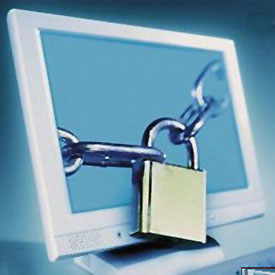Computer Security Steps
Computer Security Steps
For both computer users who connect to the internet or not, it's time to find out that the danger of computer crime continues to lurk either consciously or unconsciously, just waiting for the right time to destroy the contents of your computer.
Related to the news in online media, about the spread of viruses melesatnya locally made no less merepotkannya with the virus overseas, then I am reminded to friends reader should always be alert. And be aware that I have outlined to 9 the first step in securing your computer. Remember, this is 9 a first step, awareness and update your knowledge about new ways used by criminals still always required.
Today, computer users in Indonesia are mostly using Microsoft Windows as the operating system, and this step is intended for the operating system.
1. Operating System Upgrade
Operating system upgrade to a newer, at least stay abreast of the latest programs available.
Microsoft Windows XP users upgrade to Microsoft Windows XP Service Pack (SP) 2.
For users of Microsoft Windows 95/98/ME/NT, it is advisable to upgrade to higher ground.
Closing security holes in operating systems by installing the latest security patches.
2. Use a Firewall
A firewall helps protect computers from malicious hackers, worms, and some spyware.
Use the Windows Firewall (available in Windows XP SP2) or other firewall products either have to purchase or for free. Some commercial firewall program is ZoneAlarm, Agnitum Outpost Personal Firewall, Checkpoint Firewall, etc.. While the games like Comodo Personal Firewall, Sunbelt Personal Firewall,
For broadband Internet users, make sure the router has a firewall.
3. Install Antivirus
Antivirus protects us from access to computer viruses and other malicious attacks such as trojans and worms. Antivirus can look for viruses, trojans, and worms that dwell in the computer and scanner on incoming email and outgoing email. Most important are:
Make sure your Antivirus is always set to update his knowledge of the latest viruses.
Also make sure your antivirus program is the latest version.
Do not open email attachments from people you do not know.
Perform the scanner (scanning) to removable devices such as external hard disk, USB disk, or CD / DVD which sometimes activate the auto-run.
4. Always Update
Just like the operating system, software that continues to be updated will be free from the problem of security weaknesses.Also, use the latest programs to keep abreast of security developments of the program.
5. Prevent Spyware
Spyware is a small program that landed on our computers to record and transmit all the data and activities that occur on your computer, of course, only the pembuatlah desired activity is recorded, such as keyboard activity by a keylogger.
Prevent spyware can be done by:
Beware of files that you open or download via the Internet or email.
Do not install programs that do not clear the manufacturer.
Do not indiscriminate surfing to sites that have a high risk level. For example: many porn sites that contain spyware.
Eliminate spyware can use programs like Windows Defender AntiSpyware, Ad-Aware, Spybot Search & Destroy, etc then do the scanner in the entire computer. Make sure the program always do automatic updates and scan your computer every day before you start work.
6. Secure Wireless Connection (Wireless)
If you have a wireless network, always follow the installation and documentation:
Use MAC filtering to restrict the use of a trusted computer only.
Use WPA or WPA2 encryption is more secure to reduce the risk of interception.
7. Limiting the Risk of Email Spam
There are several things you can do to reduce the risk of spam:
Do not click on any of the emails that have been identified as spam.
Split between personal email / office with emails that are used specifically to register online.
Use an email client that has been integrated with the spam filter or install spam filtering program.
8. Backup
Always back up important files and store in a safe place, make sure the files terbackup well and do not contain malware.
9. Physical Security
Create a "security" on your computer and other items that you think is important, so always remember that these items need security.
Be sure not to leave small notes everywhere.
Write down any serial numbers and do not let others know.
Make sure doors, windows, garage locked properly. Motion detectors and alarms improve your home security.
Do not let the computer visible from outside the house, it will invite thieves.
Use an additional lock for the laptop, eg fingerprint, usb dongle, etc..
Use a bag that has extra security for laptops.
Be careful when your vehicle to crash the street, for example: a flat tire, which is often used by criminals to steal your laptop.



0 Response to "Computer Security Steps"
Post a Comment